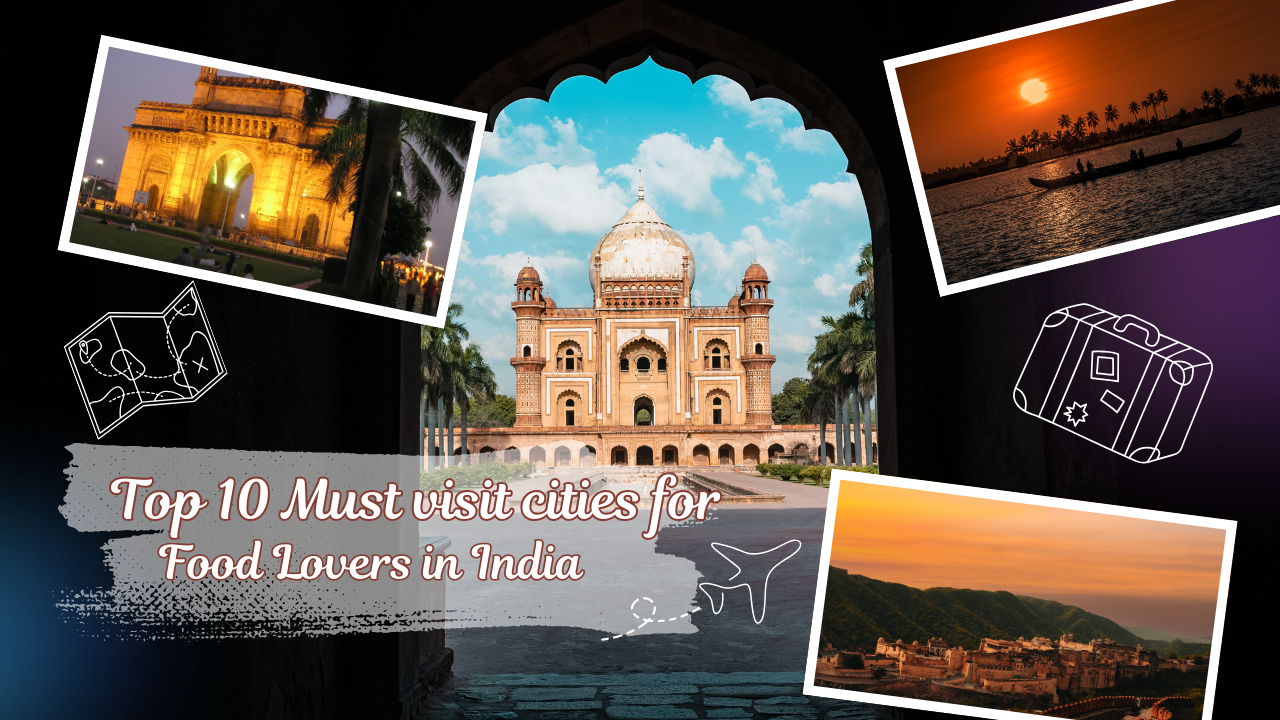India, a land steeped in history and adorned with architectural marvels, offers a captivating journey through time. From the grandeur of Mughal empires to the ancient mysteries of lost civilizations, India’s historical sites are a testament to its rich and diverse past. If you’re planning a trip to India in 2025 and yearn to explore its historical treasures, this guide to the top 10 historical places in india is your essential companion.
Why should you visit India’s historical sites?
Visiting historical sites in India is more than just sightseeing; it’s an immersive experience that allows you to:
- Witness Architectural Brilliance: Marvel at the intricate carvings, majestic domes, and ingenious engineering feats of ancient structures.
- Delve into Diverse Cultures: Understand the tapestry of traditions, religions, and lifestyles that have shaped India’s identity.
- Connect with the Past: Walk in the footsteps of emperors, scholars, and artists, gaining a deeper appreciation for India’s heritage.
- Create Unforgettable Memories: Capture stunning photographs and create lasting travel experiences that will enrich your understanding of the world.
Our Top 10 Historical Places in India to Visit in 2025
This curated list encompasses a diverse range of historical sites across India, catering to various interests and offering a glimpse into different eras.
10. Jaisalmer Fort (Sonar Quila), Rajasthan
What it is: A massive fort built in the 12th century, also known as the “Golden Fort” due to its yellow sandstone walls.
Why visit: Unlike most forts, Jaisalmer Fort is a living fort, with thousands of people residing within its walls. Explore the narrow streets, havelis (mansions), and Jain temples within the fort.
Key features: Living fort, intricate architecture, stunning desert views.
Best time to visit: October to March.
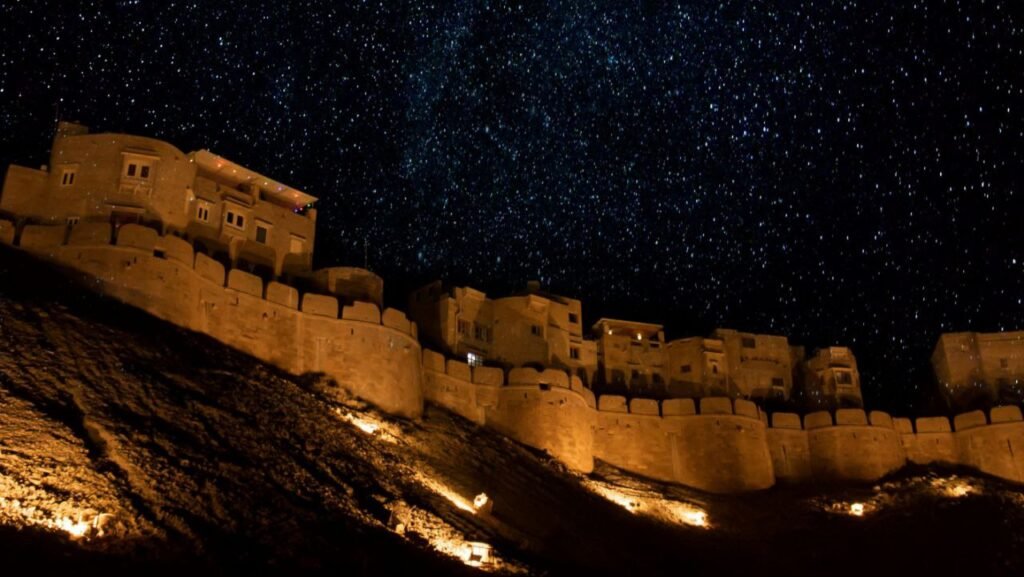
9. Konark Sun Temple, Odisha
What it is: A magnificent 13th-century temple dedicated to the Sun God, Surya, designed as a massive chariot.
Why visit: A UNESCO World Heritage Site, the Konark Sun Temple is a masterpiece of Kalinga architecture, renowned for its intricate carvings and impressive scale.
Key features: Intricate carvings, chariot-shaped structure, astronomical significance.
Best time to visit: October to March.
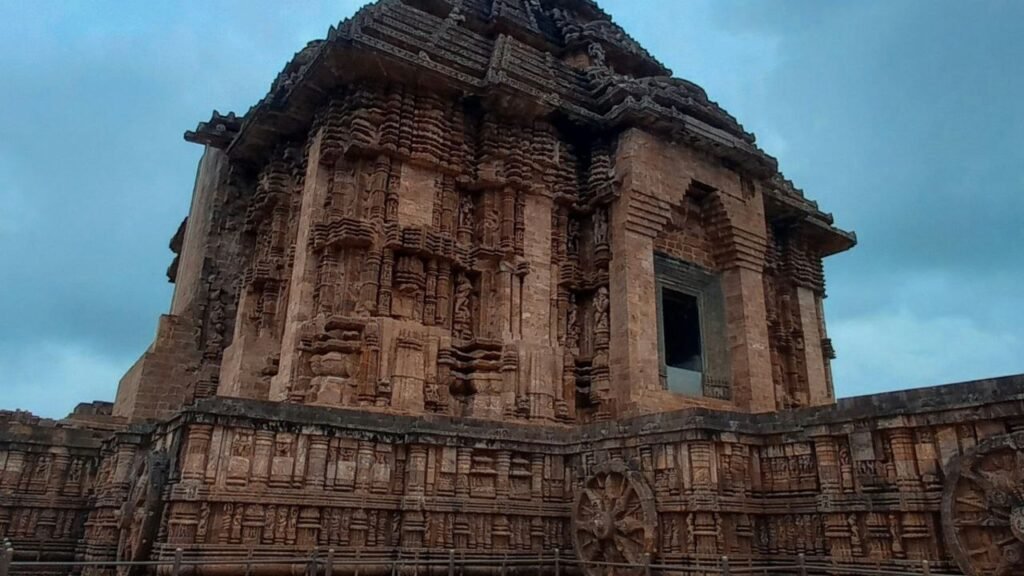
8. Fatehpur Sikri, Uttar Pradesh
What it is: A fortified city built by Mughal Emperor Akbar in the 16th century, serving as the capital of the Mughal Empire for a short period.
Why visit: A UNESCO World Heritage Site, Fatehpur Sikri is a remarkable example of Mughal architecture, showcasing a blend of Indian and Islamic styles.
Key features: Buland Darwaza (Victory Gate), Jama Masjid, Panch Mahal.
Best time to visit: October to March.
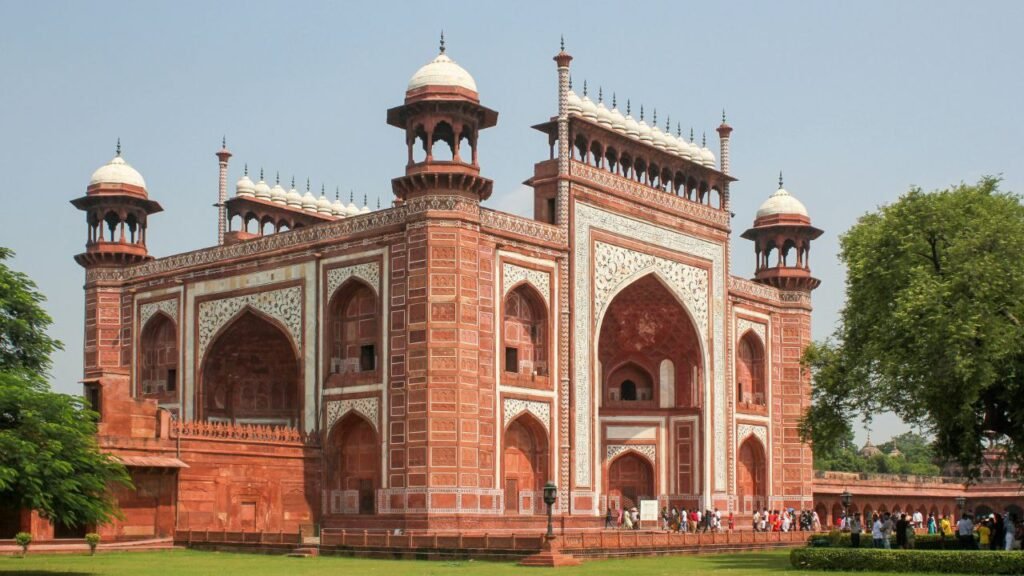
7. Ajanta and Ellora Caves, Maharashtra
What they are: Ancient rock-cut caves featuring Buddhist, Hindu, and Jain sculptures and paintings, carved over several centuries.
Why visit: Both UNESCO World Heritage Sites, Ajanta and Ellora offer a remarkable glimpse into ancient Indian art and religious beliefs. Ajanta is known for its Buddhist murals, while Ellora features a unique blend of Buddhist, Hindu, and Jain cave temples.
Key features: Intricate carvings, murals, diverse religious representations.
Best time to visit: October to March.
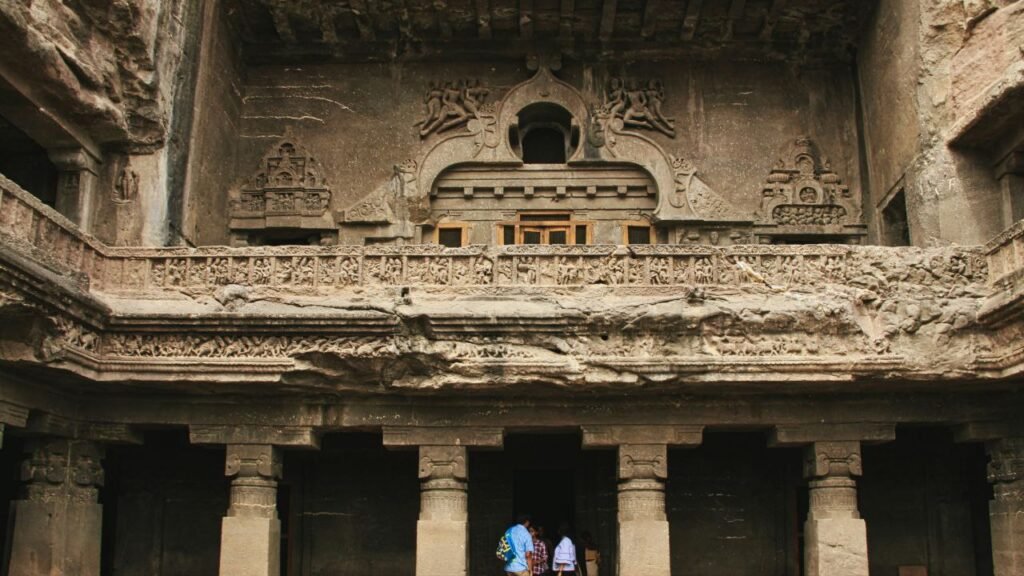
6. Khajuraho Temples, Madhya Pradesh
What it is: A group of Hindu and Jain temples built between the 10th and 12th centuries by the Chandela dynasty, renowned for their intricate sculptures, including erotic carvings.
Why visit: A UNESCO World Heritage Site, the Khajuraho Temples showcase exquisite artistry and offer insights into the cultural and religious beliefs of the time.
Key features: Intricate sculptures, distinct architectural styles.
Best time to visit: October to March.
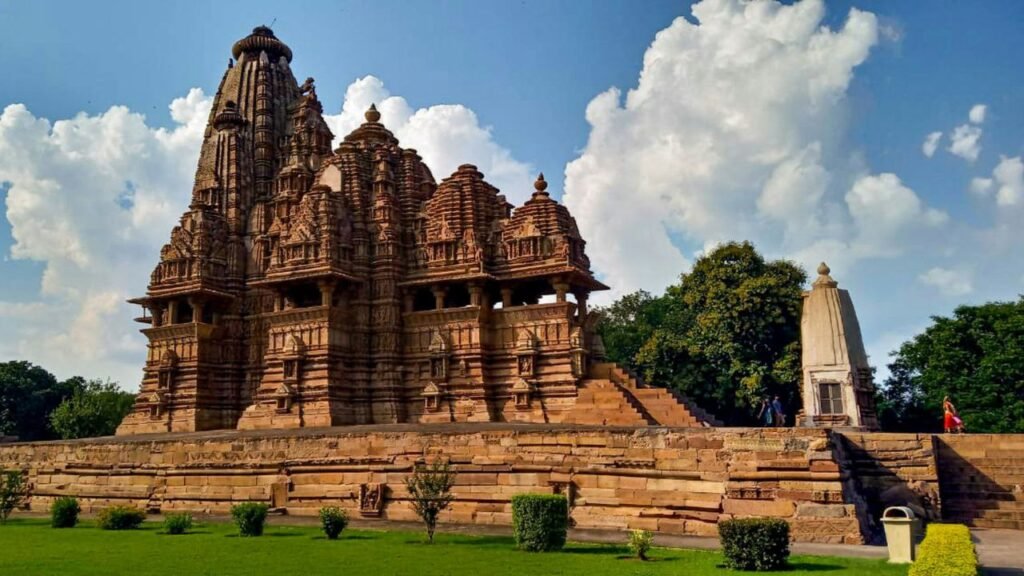
5. Hampi, Karnataka
What it is: The ruins of Vijayanagara, the capital of the Vijayanagara Empire, a once powerful and prosperous kingdom that flourished between the 14th and 16th centuries.
Why visit: A UNESCO World Heritage Site, Hampi offers a fascinating glimpse into a bygone era. Explore the ancient temples, palaces, market streets, and other structures scattered across a vast landscape.
Key features: Virupaksha Temple, Vittala Temple (with its iconic stone chariot), numerous ruins.
Best time to visit: October to March.
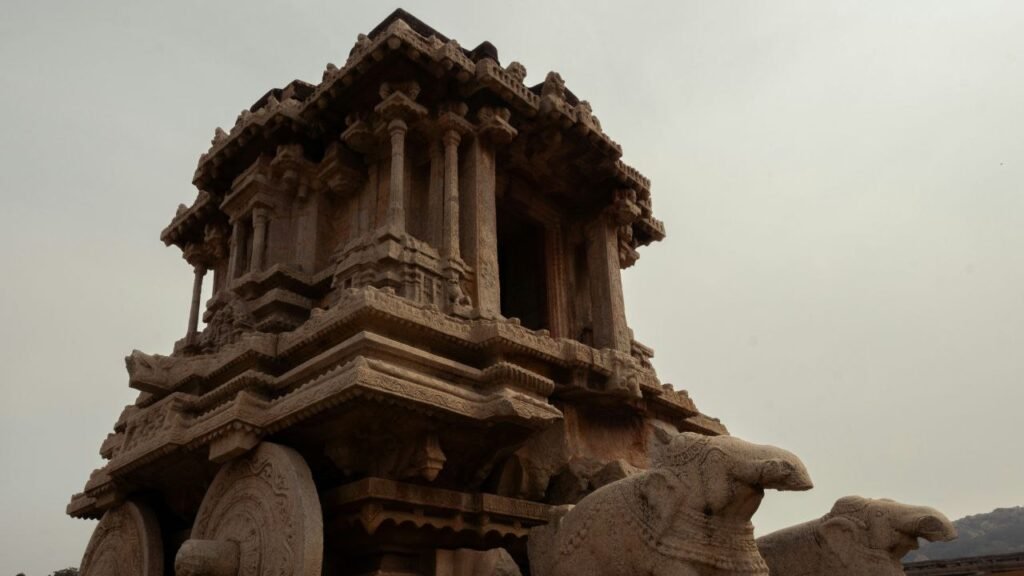
4. Amer Fort (Amber Fort), Jaipur, Rajasthan
What it is: A majestic fort built by Raja Man Singh I in the 16th century, perched on a hilltop overlooking Maota Lake.
Why visit: The Amer Fort is a stunning example of Rajput architecture, blending Hindu and Mughal styles. Explore its opulent palaces, courtyards, and gardens, and enjoy breathtaking views of the surrounding landscape.
Key features: Sheesh Mahal (Mirror Palace), Sukh Niwas (Hall of Pleasure), intricate artwork.
Best time to visit: October to March.
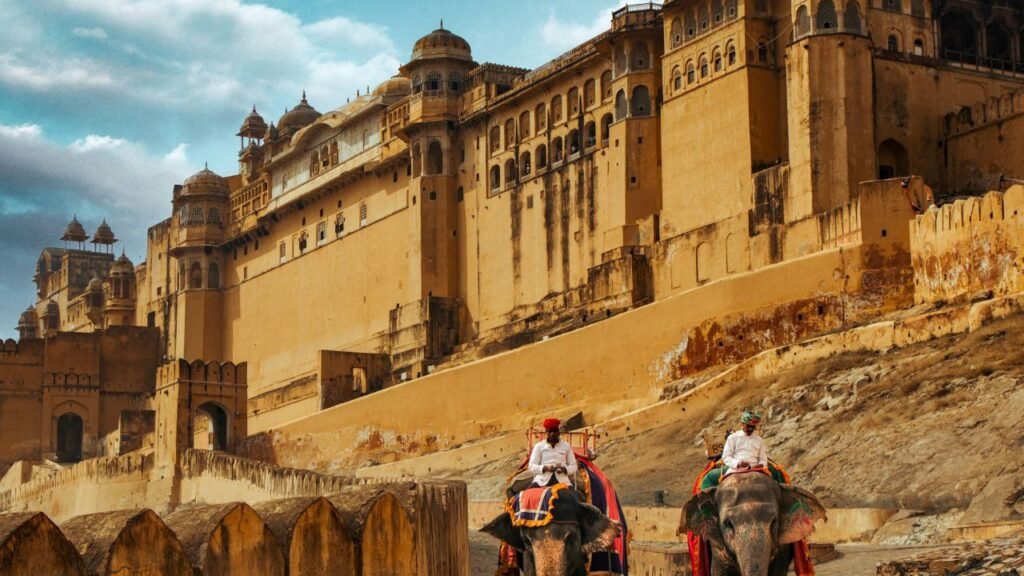
3. Qutub Minar, Delhi
What it is: A towering 73-meter tall minaret built in the 12th century by Qutub-ud-din Aibak, the founder of the Delhi Sultanate.
Why visit: A UNESCO World Heritage Site, the Qutub Minar is a remarkable example of Indo-Islamic architecture, showcasing intricate carvings and inscriptions. The complex also includes other historical structures like the Quwwat-ul-Islam Mosque and the Iron Pillar.
Key features: Intricate carvings, historical inscriptions, surrounding ruins.
Best time to visit: October to March.
Top 10 India’s Best Places to Visit in December….click here
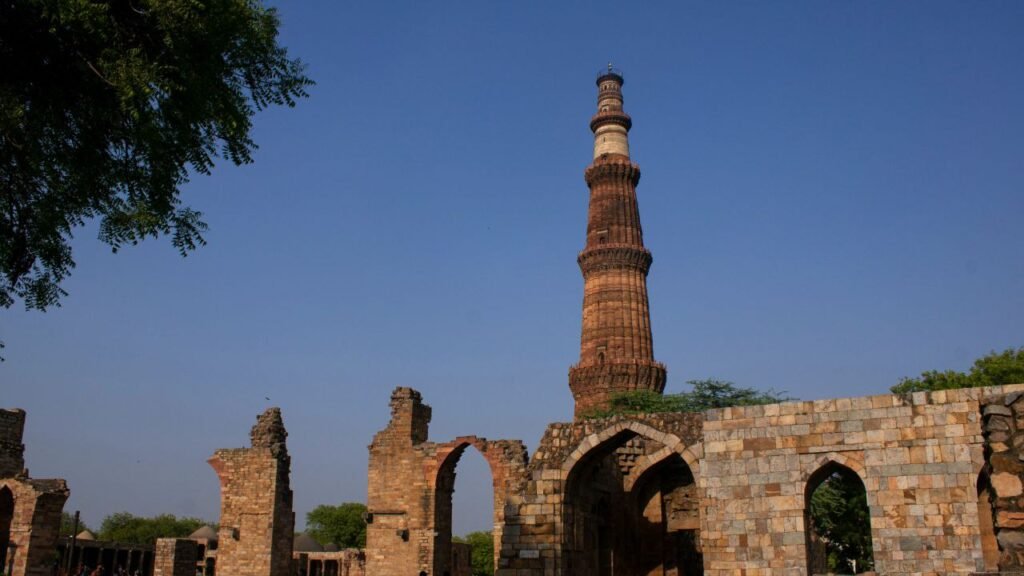
2. Red Fort (Lal Qila), Delhi
What it is: A sprawling 17th-century fort built by Mughal Emperor Shah Jahan, serving as the residence of Mughal emperors for nearly 200 years.
Why visit: A UNESCO World Heritage Site, the Red Fort showcases the grandeur of Mughal architecture and offers insights into India’s Mughal history. Key structures include the Diwan-i-Aam (Hall of Public Audience) and Diwan-i-Khas (Hall of Private Audience).
Key features: Massive red sandstone walls, intricate gateways, Mughal gardens.
Best time to visit: October to March.
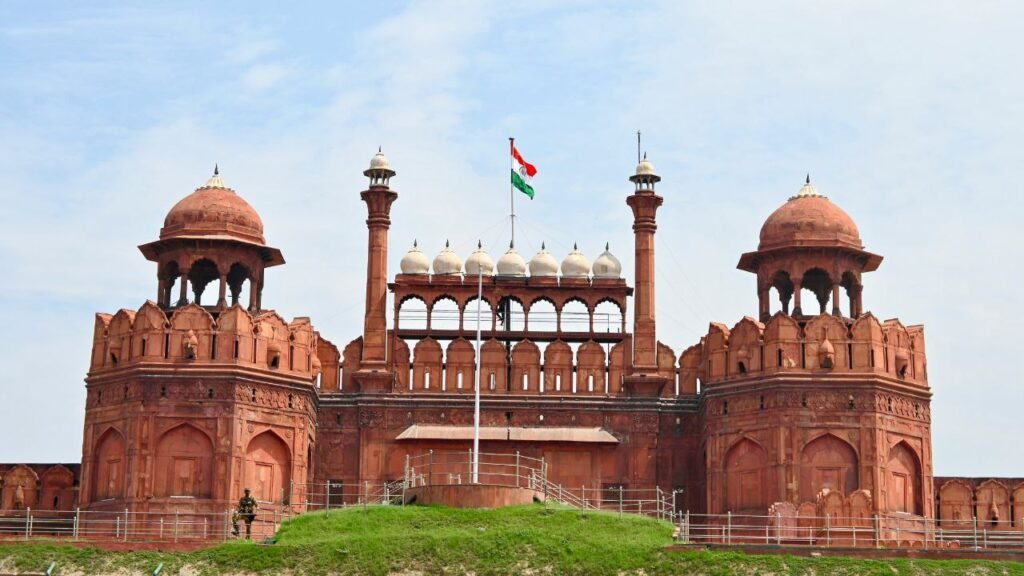
1. Taj Mahal, Agra, Uttar Pradesh
What it is: An exquisite ivory-white marble mausoleum commissioned by Mughal Emperor Shah Jahan in 1632 to house the tomb of his beloved wife, Mumtaz Mahal.
Why visit: A global symbol of eternal love and a UNESCO World Heritage Site, the Taj Mahal is an architectural masterpiece renowned for its symmetry, intricate inlay work, and breathtaking beauty. Witnessing it at sunrise or sunset is a truly magical experience.
Key features: Intricate marble inlay work, stunning gardens, reflective pools.
Best time to visit: October to March (avoiding the extreme heat of summer and the monsoon season).

Tips for Planning Your Historical Trip to India in 2025
- Research and plan your itinerary: Decide which sites you want to visit and plan your route accordingly.
- Book accommodations and transportation in advance: This is especially important during peak season.
- Consider hiring a local guide: A knowledgeable guide can enhance your experience and provide valuable insights.
- Respect local customs and traditions: Dress modestly, especially when visiting religious sites.
- Stay hydrated and protect yourself from the sun: Carry water and sunscreen, especially during the warmer months.
- Be prepared for crowds: Some of these sites can be very popular, especially during peak season.
By planning your trip to India in 2025 and including these magnificent historical sites, you’re setting yourself up for an unforgettable journey through time. You’ll witness the grandeur of empires, explore ancient mysteries, and connect with India’s rich and diverse heritage.
FAQs
Q: What are some of the most iconic historical sites included in the list?
A: The list includes iconic landmarks like the Taj Mahal, Red Fort, Qutub Minar, Amer Fort, Hampi, Khajuraho Temples, Ajanta and Ellora Caves, Fatehpur Sikri, Konark Sun Temple, and Jaisalmer Fort
Q: Are these historical places suitable for families with children?
A: Yes, many of these sites are suitable for families. However, it’s advisable to check specific site guidelines regarding accessibility and age appropriateness beforehand. Some sites may involve a lot of walking.
Q: How can I plan a historical tour of India that includes these locations?
A: Planning a historical tour involves researching specific sites, booking accommodations and transportation in advance, and potentially hiring local guides. Consider the geographical locations of the sites to optimize your travel route. Many travel agencies offer specialized historical tours of India.
Q: Are these historical places recognized by UNESCO?
A: Yes, many of the sites mentioned, including the Taj Mahal, Red Fort, Qutub Minar, Hampi, Khajuraho Temples, Ajanta and Ellora Caves, Fatehpur Sikri, and Konark Sun Temple, are UNESCO World Heritage Sites, signifying their cultural and historical importance.

